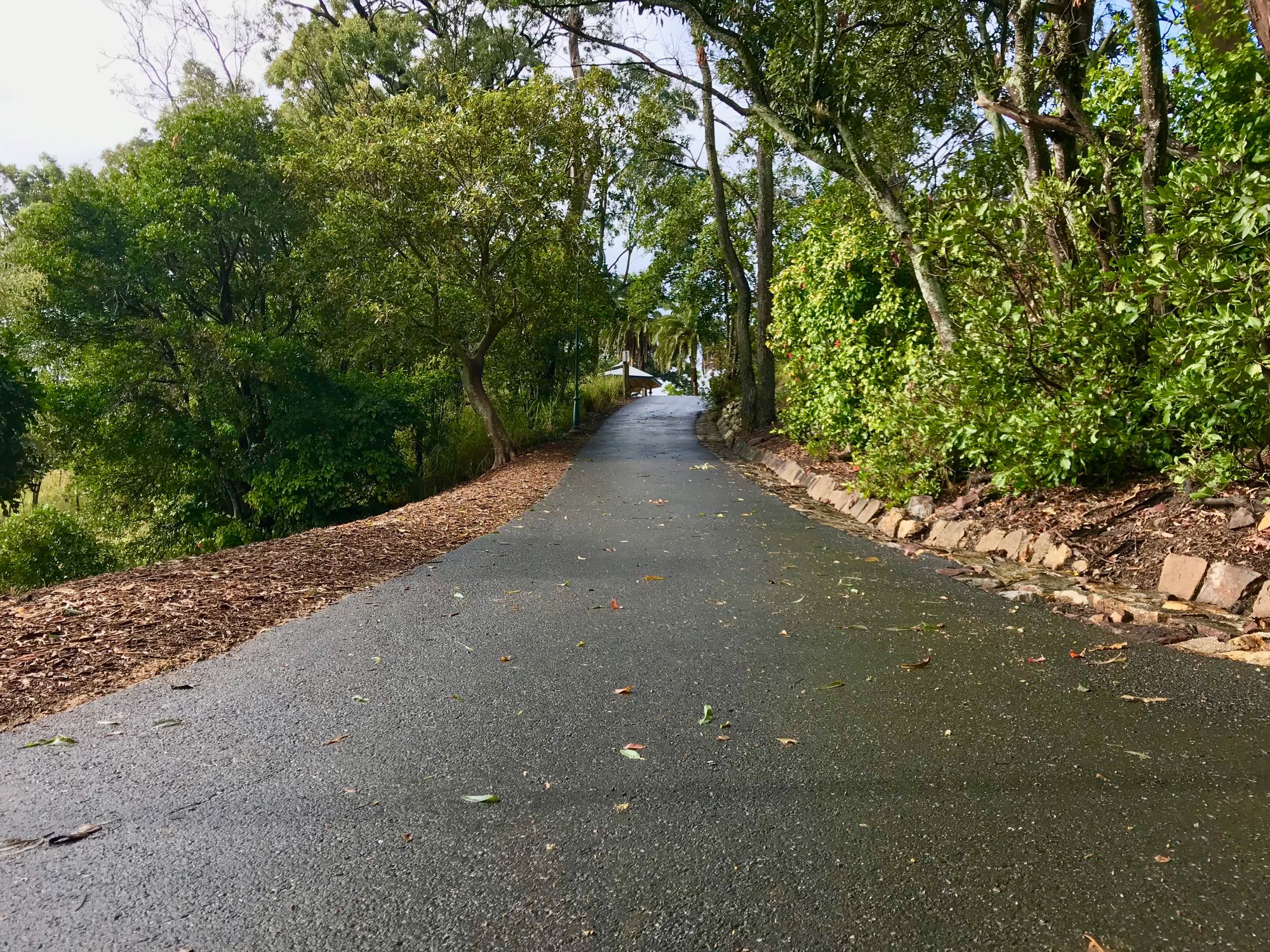Hill sprints will teach you who you are
The best bang for your buck, a metaphor for life, curing human marshmallow-itis, finding balance at the extremes.

This morning I did seven hill sprints, not five, not ten, seven.
Why?
Because I felt like that was enough.
80% on the first one and by the second one, you should be hitting full tilt and holding it there.
The beautiful thing about doing hill sprints?
Things should be plural because there’s more than one.
- You get out in nature.
- You challenge yourself.
- You expand as much effort as you can in a short period of time (high bang for buck).
- People walk past and say “wow, that looks hard.” And if it’s morning, you can smile, let out a little laugh and say “good morning”.
- If you find yourself in a situation where you need to run (fast), having a body tuned for sprinting up hills is (very) helpful.
- If you’re doing it right, by the 3rd or 4th summit you lose all sense of being alive (more on this below).
Let’s expand upon and talk about these some more.
Not even 10-minutes
My circuit this morning was seven laps of one of my favourite local hills (see picture above). I don’t know how long it is, maybe 30-metres, 40, 50 or how steep it is, maybe 11 degrees at the bottom and 15 degrees at the top (I like that it gets harder towards the top).
But these things don’t matter.
If you have to ask if the hill you’re going to sprint up is steep enough, it’s not.
I did all seven in under 10-minutes. Sprint up, walk back down, sprint up, walk back down, seven times.
Here’s the first reason hill sprints will teach you who you are.
Do you require several reasons before doing something?
Hill sprints require zero equipment and minimal time for extraordinary results (you’re smart enough to realise how good they are for your health).
All they require is you to show up.
You know, to write this thing I thought of going to a local cafe. Turns out I forgot it was a Sunday (one of my life goals is to forget what day of the week it is).
Anyway, after 20-minutes battling for a car park, then getting out and walking through a horde of people, I painfully realised I was getting in my own way.
I got back in the car and drove home.
All the while thinking, just give me a blank wall to write in front of. A blank wall. That’s it. Nothing else matters except getting these words out.
What kind of amateur would I be if I had to be sipping espresso before I punching holes into this keyboard?
The amateur says things like:
“I don’t the equipment” and “I don’t have the time.”
The professional says things like:
“F*ck the equipment” and “I’ve got time.”
Are you an amateur or a professional?
Learning through pain
How do you react to the world when your whole body is screaming for oxygen?
Are you calm? Or do you lose the plot?
Doing hill sprints is a challenge. It requires effort to put one leg in front of the other whilst the incline makes itself known.
But do them enough times and you start to fall in love with the challenge.
And so when the universe decides to throw you a curveball even something as simple (but no less painful) as finding a parking spot in a crowded car park, you’re ready. You’ve been practising. You’ve gotten used to taking on challenges. So instead of losing the plot. You say, “bring it.”
Practice withstanding pain and you can withstand anything. Learn to control pain and you can control anything.
Perplexed
Something which perplexes me every day: The average human doesn’t move.
I’m not sure where you live but maybe this isn’t the case.
But right now, it seems as though the whole world is worried about different minority groups. How about the continually shrinking minority of healthy people?
The third reason.
Hill sprints are part of the cure for human-marshmallowitis.
Considering you’re a reader of this letter, I’m assuming you already aren’t a human marshmallow.
But if you are, here’s your task:
- 1–2 sessions of hill sprints per week (seriously, this is all you need).
- During each session do 5–10 laps of a hill in your local area (make sure it’s steep and long enough to be a challenge).
- Never do more than 10 laps (don’t train yourself into oblivion, you want to be able to move the next day).
- Never do more than 2 sessions per week (again, unless you’re absolute savage, let your body recover, on the rest days, walk instead).
Hunt to eat
More people die now from overeating than undereating.
Why?
I’ve got a simple hypothesis for this.
We don’t hunt to eat anymore.
I’m not saying you have to go out and hunt for the food you buy at the supermarket. Nor is this just to do with channelling our ancestors.
It’s to do with fixing the balance between challenge and reward.
The reward feels better when you’ve worked for it.
The food tastes better when you’ve exerted effort for it.
Another challenge: Do your hill sprints before breakfast — treat food as the reward.
Jiu Jitsu practice before sunrise this morning.
— Daniel Bourke (@mrdbourke) July 22, 2020
Waking up in the dark and cold is shithouse. But you feel amazing afterwards.
A metaphor for the hard things.
Difficult at the time but the energy afterwards is like no other.
Shallow happy comes from instant pleasure (getting the reward without challenge), deep happy comes from pleasure following a challenge (risk before reward).
Even without the topic of hill sprints. I’m sure you can find the crossroads here to your own life.
From both ends
Our ancestors would spend large amounts of time doing nothing (minimal energy expenditure). Followed by extremely intense bursts of energy expenditure.
Modern society seems to have moved more towards a drip-feed method. Instead of having the extremes of nothing and everything, we’re somewhere in between.
It’s the trickle of emails coming in, the notifications on your phone, the social media posts, the alarm clock going off 5 days per week, the treadmills with TVs built into them, the fighting traffic and looking for car parks at packed shopping centres.
But how well do you operate when you’re stuck in between forty-seven different things?
I’m convinced we operate at our best when we’re deep into something or deep into nothing.
Hill sprints are part of the cure. They’re a form of extremely intense bursts of energy expenditure. The other extreme is long, slow, purposeless walks in nature.
Taking a look at Mother Nature’s work, it seems she intended us to achieve balance by pulling from both extremes at the same time. And hill sprints are one half of the equation.
You can use this approach for your creative work too. Long periods of deep instance work (like me writing these lines and doing nothing else) followed by long periods of empty space.
The most alive
If you want proof that the universe can operate fine without your conscious existence, remind yourself of the activity you do every day for 8-hours.
Whilst you’re sleeping, birds still fly, planets still move, fast food joints (sadly) still operate and gravity still sings its song.
Some might see this realisation as negative. That the universe doesn’t depend on you at all.
But I see it as a duality. Since I am part of the universe, for it to exist, I have to exist.
We each require each other.
This feeling makes itself real towards the end of a hill sprint session. When you’re a few footsteps away from the top of the hill and all those thoughts you were thinking start to disappear and you start to forget whether you’re alive or not.
Then you hit the top of the hill and start to slow down and all of sudden everything starts to come back and as you answer your lungs cries for air, and you realise, yes, I am well and truly alive.
I want this reminder often.
No music
Again. Another excuse.
Here’s my soundtrack: Feet on pavement, my own heartbeat, nature and two lungs expanding and contracting.
You can use music if you want. But if it’s not clear, what I’m getting at is the removal of things to get in your way. The removal of requiring something before making an attempt.
If I’m already my own roadblock, why would I want to add anything else?
Like I said before if I need to write, give me a blank page and a blank wall. The words matter, everything else doesn’t.
If you need to move (and you do), go and find a hill and run up it or a long stretch of trees to walk amongst. The movement matters, everything else doesn’t.
[This post originally appeared as the July issue of my newsletter: Eat, Move, Learn, Make]
